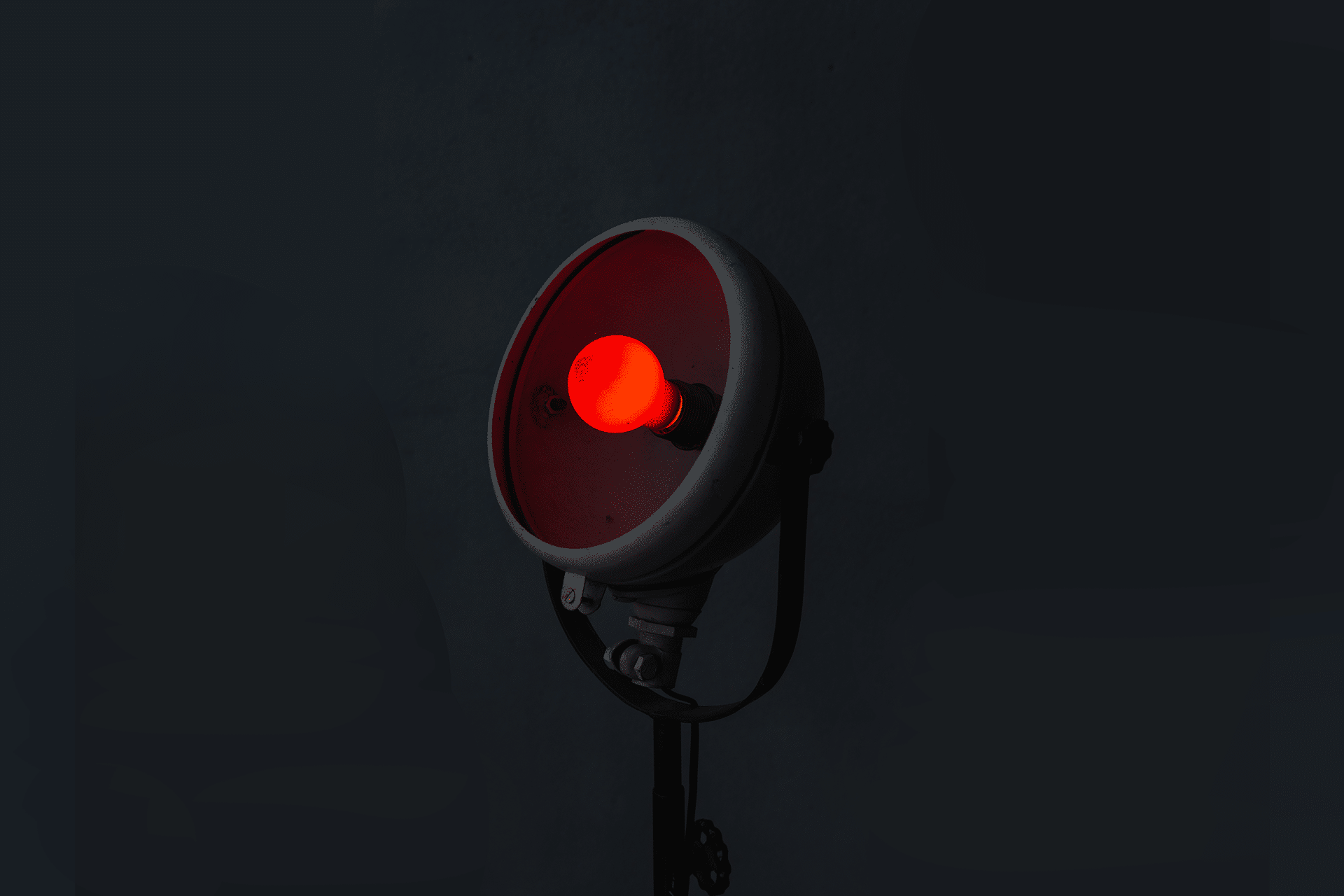Courage, the miracle cure for the future?!
What’s your first idea of courage? Are they heroes like Superman, Frodo from the “Lord of the Rings” or Pipi Longstocking? Is it perhaps Nena’s song line “Love is made of courage” or the Greens’ election program “Future is made of courage”? Or would you rather think of the Mutmagazin1 or the Mutland2 initiative? Perhaps you also think of yourself when you think of courage?
Courage is not only spoken of in literature, nor is it only sung about or placed as slogans on posters. Courage can be found in statements like “you are bold”, “how courageous of you” or “brave step he took”. Courage is the positive quality that is appreciated and admired. Due to the courage that is exerted, a situation changes – for oneself and also for others. Courage is therefore also a decision that expresses itself in action and triggers change. And change is a source for the new. No wonder that organizations should be courageous in order to become sustainable or to tackle change.
The value of courage
In the Values Commission’s annual executive survey, courage is listed as one of the six core values. Characterised by the “willingness to accept and accept something new”, “error-friendliness” and the “power to make decisions and change”.3 Aspects that also emerge in discussions about new work, innovation, leadership or attitudes. The topic of courage is also taken up at events. Examples of this are the “Mutmacher Summit” or this year’s Leadership Conference for lateral thinkers, entitled “Leading into the future with courage and attitude”. Courage is apparently an important value for the future. Interestingly, this is not reflected in the results of the executive survey. There courage ranks despite the medial attention for years on the last place.4
A look at empirical studies on courage in the workplace opens up a further level of observation: situations that require courage tend to be avoided by managers.5 It is therefore hardly surprising that people in their organisation are prevented from trying out and trying something new or thinking for themselves in innovative ways. These are precisely the factors that promote courageous action in the organisation and benefit the pursuit of innovation. Wolf Lotter finds clear words for this with “Innovation is not for cowards.”6 and the subsequent question “But who teaches and supports the courage to adopt one’s own attitude?”7
What’s courage?
In psychology, courage refers to three phenomena: first, a feeling or emotional state, second, a personality trait, and third, a visible behavior.
Courage as visible behaviour can take different forms. There is the physical courage that comes to light when life is threatened. Existential courage can be seen, for example, when someone conquers one’s weaker self and one’s own psychological stability is maintained. An obvious example is overcoming a destructive habit such as alcohol addiction. Of particular interest here is moral and social courage, which also includes moral courage and civil disobedience.8
Whistleblowers are a fine example of how physical and social courage interact. Although they face legal consequences and their lives will be disrupted by the uncovering of the misconduct of their organizations, they still do so and take the risk. They remain true to themselves and their value orientation. It can also take social courage as project management to declare the prestige project in the organisation to have failed, or to openly question management decisions. Depending on the organisation, such behaviour can be accompanied by social ostracism, ridicule or loss of face. This clearly shows the characteristics of courageous behaviour: a risk has been taken or the loss of security, such as managing the next project or even the job, has been accepted. Despite the personal risk, the project management has made a decision about what behaviour it considers to be “right” or “wrong” in this situation and has taken action. And with certainty, it is not clear what consequences their behavior will have with all the thinking about possible consequences. The uncertainty is overcome by a spark of hope or confidence. Exactly this underlines the social courage to take a stand without knowing how others will behave and take responsibility for it.
To be courageous means to overcome fear and psychological resistance, to take risks, to endure the uncertainty and the open outcome, and to accept a possible failure. The chance of failure is less worrying than not being active, because “those who act courageously pursue a goal that has a higher value than the anti-target of danger avoidance.”9 Courageous behavior therefore expresses itself differently from person to person. For some it is courageous to give an impulse lecture at an event, to admit a mistake for someone else and to pursue an unusual idea in the company for the next.
The alternative or the anti-objective, i.e. not to do anything and thus not to take any personal risk, also means to say goodbye to a potential development opportunity. It is more dangerous to be discouraged and hold on to what you are used to than to be courageous and expand your scope of action. This also applies to organisations. Interestingly, organisations do not check the costs of not taking risks. Ronald Wayne, Apple’s third founder, can at least guess what he missed after leaving the company a week after it was founded and returning his ten percent share.10
What promotes courage IN organizations?
Back to the question how courage can be supported: Shilpzand et al. found in a study on courage in the workplace that the social integration in a team, the autonomy experienced as well as the presumed advantages encourage courageous behaviour. According to Hammer, it is also the arwareness that mistakes are not sanctioned. Whereby it does not necessarily have to be mistakes, but rather failures or errors that can accompany one on the courageous path into the unknown. After all, there are no ready-made solutions for something that is unknown, but only ways that can be taken with the risk of making missteps or detours.11
The Phonak company focuses on the positive, e.g. by welcoming project cancellations by the project team and celebrating the participants in the employee magazine as heroes for their courage. This should not imply that mistakes cannot feel bitter or cause losses, but they can be smaller than e.g. continuing the project. It is important to focus on the learning process with its opportunities, to focus on the experiments and experiences and to reflect on the procedure. The more so as trying to do so has the advantage that the person in question gains a deeper understanding of the problem or task and recognises interrelationships. From everyday life, examples are known to each of us in which experiences were increased by trying them out. Just think of the first attempts at walking, writing the first text, the first team game or the first attempts at cooking. Did they succeed at the first attempt? Wasn’t it rather “trying, learning, going on – and from the beginning “12 Strengthening trying and testing is exactly what employees in their organisations want more.13 Then new possibilities or potential for improvement can be discovered.
The views and ideas associated with this can be expressed more openly if there is a trusting relationship and what has been said does not lead to social ostracism. Trusting someone includes showing oneself to be approachable and vulnerable as well as contributing one’s emotions and points of view. This does not only require courage in planning-controlled or figure-data-facts-fixed companies. In addition to standing up for mistakes, trust also manifests itself when fears are shared or when dissenting opinions are expressed. Disputes, passionate rounds of talks or disputes may be smooth, but they are valuable because different perspectives are introduced and the status quo is questioned. It is precisely the emotional contribution that creates a sense of solidarity among those involved. This trust in alliance with trust strengthens self-responsibility and promotes autonomy. On the other hand, control leads to a decline in performance, as can be guessed, and is also confirmed by the neurobiologist.14 Do you trust that people in their working environment are committed to the goals of their organisation?
What do we do now?
Autonomy, trust, openness, tolerance of errors and the ability to learn are all factors that contribute from innovation research to an innovation-promoting environment, which is why innovation and courage are firmly linked.15 Courageous action requires an examination of the image of man and the values within the organisation, as well as questioning how errors are dealt with and promoting autonomy. For the management level, the question also arises as to how they can help people to develop their courage. Because like Förster and Kreuz formulate concisely: It is guidance task to encourage humans to dare to do themselves from the covering and something, which they would not do otherwise perhaps.16 Courage can unfold an amazing and marvelous effect. This effect can irritate an organization, but it also sets something in motion. Courage is not a miracle cure that can be taken like the magic potion from Asterix & Obelix. Rather, there is a courage potential in each of us that we need to train like a muscle in order to expand our own design and action space inside and outside the organization. After all, this increase in courage enables us to solve problems faster and more purposefully and to be less easily intimidated by difficulties. This is how future options can be shaped.
And what does your organization do to encourage you? Also ask yourself when you (yourself) are in your organisation:
- last time you talked about one of your mistakes?
- who have recognised attempts and progress made by one another?
- have decided something whose outcome you did not know?
- the last time you accepted something new?
- felt courageous?
Notes (mostly in German):
[1] see https://www.mutmagazin.de/
[2] see https://www.mutland.org/
[3] Hattendorf, K./ Heidbrink, L./ Egorov, M./ Peus, C./ Verdorfer, A. (2018): Führungskräftebefragung 2018, Wertekommission Initiative bewusste Führung e.V. (Hrsg.), Bonn., S. 12ff.
[4] see Hattendorf, K. et al (2018), S. 13
[5] Sandberg, B. (2017): Mut in den Berufskulturen von Managern und Künstlern, In: interculture journal Bd. 16 Nr.27/28, S. 72
[6] Lotter, W. (2018): Innovation. Streitschrift für barrierefreies Denken, Edition Körber, Hamburg, S. 141
[7] Lotter, W. (2018), S. 141
[8] Dick, A. (2010): Mut. Über sich hinauswachsen. Verlag Hans Huber, Bern, S. 43ff.
[9] Dick, A. (2010), S. 50
[10] Borchers, D. (2011): Seine Angst brachte ihn um dreißig Milliarden Dollar, https://www.faz.net/aktuell/feuilleton/apple-ohne-ron-wayne-seine-angst-brachte-ihn-um-dreissig-milliarden-dollar-11558868.html, last accessed 02.04.2019
[11] see Sandberg, B. (2017), S. 71ff.
[12] Lotter, W. (2018), S.197
[13] Hays, ZukunftsAllianz Arbeit & Gesellschaft e.V. (ZAAG) und Gesellschaft für Wissensmanagement e.V. (GfWM) (2016): Der Ruf nach Freiheit, Innovationsförderliche Arbeitswelten aus der Sicht der Arbeitenden, https://www.hays.de/personaldienstleistung-aktuell/studie/der-ruf-nach-freiheit, S9f., last accessed
[14] Beck, H. (2018): Irren ist nützlich. Warum die Schwächen des Gehirns unsere Stärken sind. 3. Aufl., Goldmann Verlag, München, S. 92f.
[15] Vahs, D./Brem, A. (2015): Innovationsmanagement. Von der Idee zur erfolgreichen Vermarktung (5., überarbeitete Auflage), Schaffer-Poschel, Stuttgart, S. 210ff. und S. 225,
Meyer, J.-U. (2015): Die Innovationsfähigkeit von Unternehmen. Messen, analysieren und steigern. BusinessVillage, Göttingen, S. 212ff.,
Rustler, F. (2016): Denkwerkzeuge der Kreativität und Innovation (2. Auflage), Midas Management, Zürich, S. 52ff.,
Gassmann, O./ Sutter, P. (2013): Praxiswissen Innovationsmanagement. Von der Idee zum Markterfolg (3., überarbeitete und erweiterte Auflage), Hanser, München., S.234ff.,
Eckert, B./ Jenkins, N. (2014): Innovationskultur entschlüsselt. 12 Strategien für Führungskräfte und Innovationsverantwortliche, New & Improved, LLC., S. 17
[16] Kreuz, P. (2018): Provokative Kompetenz; https://www.youtube.com/watch?v=VPLvx1-YP2E, last accessed 02.04.2019
Sonja Tangermann has published more posts on the topic of courage in the t2informatik Blog:



